How to Make Brown Paint in Different Shades and Mediums
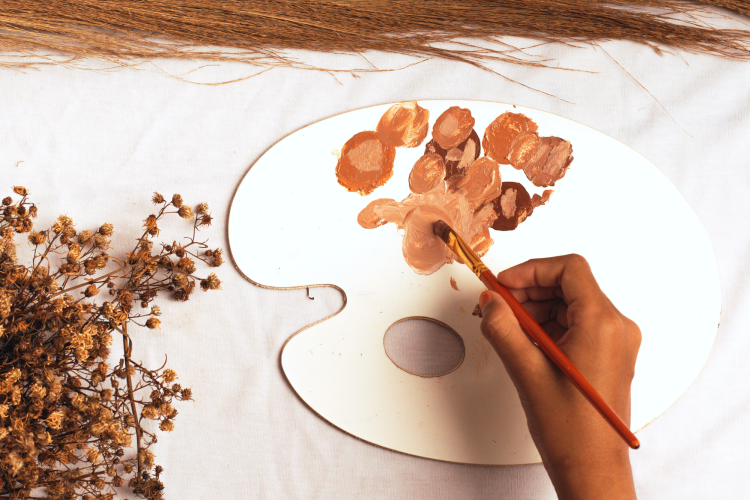
Knowing how to make brown paint is a fundamental part of painting in any medium. Though brown is one of the most abundant colors in nature, it’s also one color you won’t find on the color wheel. How can something so present all around us be missing from the artist’s spectrum? Maybe it’s because learning how to make brown paint using other colors is so easy!
So, then…how do you mix paint to make brown in shades that work best for your project? And how do you make brown tones with acrylic paint versus oil paint versus watercolor paint?
All it takes is to get started learning how to make brown paint is a few tubes of your chosen paint medium in colors you already have, plus some basic color theory. No matter what your project, you’ll have a full spectrum of beautiful browns in no time.
Jump to Section
- Mixing Colors for Beginners
- What Colors Make Brown?
- How to Make Light Brown Paint
- How to Make Dark Brown Paint
- How to Make Golden Brown Paint
- How to Make Reddish Brown Paint
- How to Make Brown With Oil Paint
- How to Make Brown With Acrylic Paint
- How to Make Brown With Watercolor Paint
Mixing Colors for Beginners
Color Theory
To understand how to make brown paint, it’s important to know a few things about color theory, which you'll learn more about below.
Though you can figure out much about color theory through experimentation, it’s quicker and easier to learn from an instructor.
Painting Classes
Painting classes are ideal for learning color mixing, like how to make brown paint, how to make red paint, purple and other colors, from professional artists and art instructors. They’ll demonstrate elements of color theory as they help you create your own magnificent works.
You can also check into online painting classes to get an introduction to color fundamentals, including the basics of how to make brown paint.
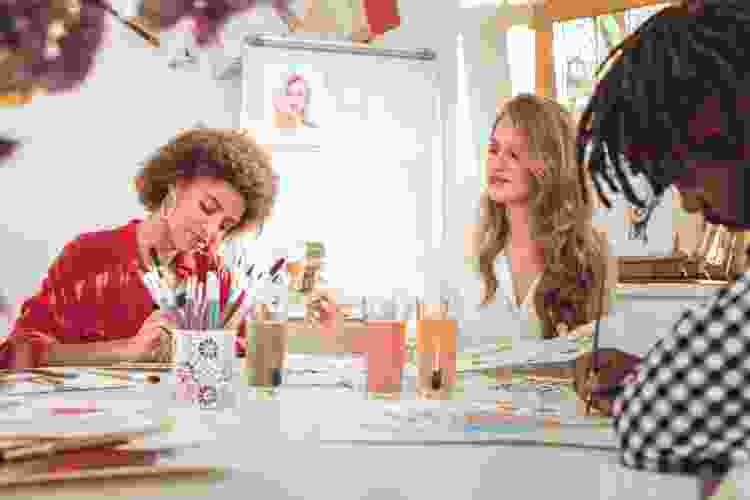
What Colors Make Brown?
Primary Colors
If you’ve ever played with paint, you know the answer to the question “What colors make brown?” is “All of them, if you mush them together!” For artists, the most straightforward solution for how to make brown paint is by mixing the primary colors blue, red and yellow.
These tones make a very basic brown, creating a central tone that you can transform into various shades, tints and tones to create an array of browns that will rival the colors of the natural world.
To achieve the brown tones you’re after, you can alter three aspects of color: hue, saturation and value.
- Hue, or color, may be closer to either red, yellow or blue, depending on how much of each you use.
- Saturation, or intensity, is determined by the shades of the color you choose when determining how to make brown paint that works for you. Brighter yellows will create a more golden brown, while deeper reds will produce a more chocolatey shade and darker blues will result in a grayish brown.
- Value, or lightness and darkness, determines how soft or rich the brown is. Paler shades of primary colors will result in lighter browns, while heavier shades will result in darker browns. When learning how to make brown paint, all hues, saturations and values are worth experimenting with.
Secondary Colors
The colors created by mixing two primary colors are called secondary colors. Mixing blue and red creates purple; mixing blue and yellow creates green; and mixing red and yellow creates orange.
If you have purple, green and orange on your palette, you have everything you need to understand how to make brown paint using secondary colors.
As with primary colors, the hue, saturation and value of your secondary colors will influence the shade of brown that results. As you go further with your painting, you’ll begin to recognize just how many different shades of brown are possible, everything from bright, basic tan to shadowy purplish brown.
Each shade plays a role in helping your creations come to life. Experimenting with secondary colors when figuring out how to make brown paint that works for you is a great exercise in discovering the full brown spectrum.
Complementary Colors
Colors found directly across from each other on the color wheel are called complementary colors. These are sets that include one primary and one secondary color, such as red and green (yellow + blue), yellow and purple (red + blue) and green and magenta (red + blue + white).
These sets provide an even wider range to work with when determining how to make brown paint in a broad variety of shades and tones. As you can tell at this point, the same primary colors are being used in all three processes.
Blending Primary, Secondary and Complementary Colors
Because paint in all mediums comes in so many colors, including many pre-mixed shades of brown, it’s tempting to simply choose a tube of brown for your piece. There’s nothing wrong with that!
But what you’ll learn as you begin mixing colors to suit your project is how to make brown paint in a more satisfying selection by blending primary, secondary and complementary colors, and even adding them to off-the-shelf brown tone. It will shift you out of the world of basic painting into the realm of true art.
Did You Know? The University of Chicago Library reports that Isaac Newton was the first to base a theory of color on a color wheel, which originated from the colors that appeared when he shone a white light on a prism.

How to Make Light Brown Paint
When deciding how to make brown paint in a lighter version, it’s important to determine what specific shade you're looking for, like what colors make tan, latte, beige, etc. There are various methods for lightening the standard combination of red-yellow-blue to achieve the intended effect.
Add Yellow
If you’re looking for a creamy or a golden light brown when figuring out how to make brown paint, adding a paler yellow to your primary color mix can turn up the lightness and bring you to the right tone.
When mixing, start with yellow and add blue and red until you find a brown that isn’t too heavy. Then, add small bits of yellow until you reach the shade you’re looking for.
Add White
Adding white to any color automatically lightens it. When you add white to the basic primary blend, you get a paler version of basic brown, which comes close to a tan or coffee-with-cream shade.
If you find you’ve gone too light when figuring out how to make brown paint in a lighter tone, add bits of the other colors until you find the right balance.
Add Light Blue
For determining how to make brown paint in a less earthen shade, choosing a lighter blue in your primary color set will give you a grayish brown like stone, mushroom or concrete.
Start with a pale blue or lighten your blue with a little white, then add in red and yellow until you find a light brown that matches your vision. You can always add extra white to the mix to lighten it up if needed.
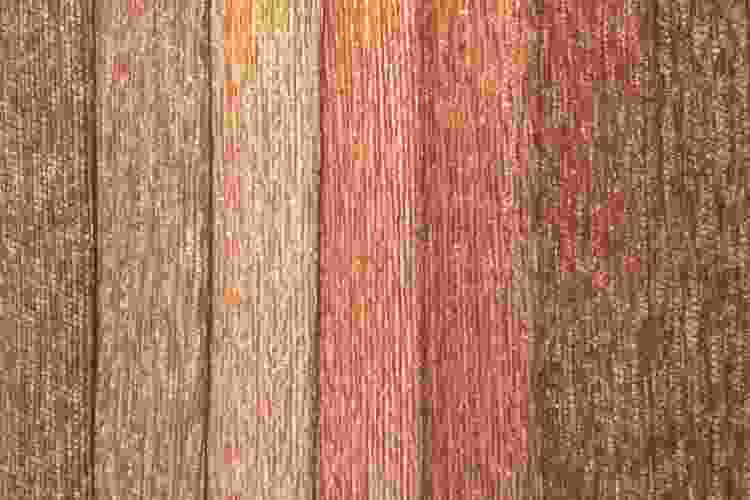
How to Make Dark Brown Paint
Dark brown paint generally falls into the categories of sepia or umber. These shades include a great deal of black to bring down the vibrancy and darken the overall brownness. Try these color blends if you want to learn how to make tan paint darker or are starting from scratch.
Add Dark Blue
For a dark brown with a watery quality, start with the basics of how to make brown paint, but make sure the blue you choose is a heavy value, such as navy or midnight blue. Then, add red and yellow until you find the right concentration.
Add Black
The easiest way to darken a brown tone you’ve already made is to add black. This lets you keep the basic value while dialing down the vibrancy until you have a great dark brown for shadows and deeper areas in your paintings.
There’s a risk of adding too much black when determining how to make brown paint for darker use, which can be difficult to remedy. Be sure to add just a bit at a time to be safe.
Add Dark Green
Trees, foliage and other wooded subjects call for a greenish brown that captures the complexity of nature.
If this is the shade you’re trying to achieve when figuring out how to make brown paint for your project, you can mix the basic red-blue-yellow brown, then mix darker blues and yellows to make a powerful green tone.
Add small bits of this darker green to the brown blend until you see the results you’re looking for.
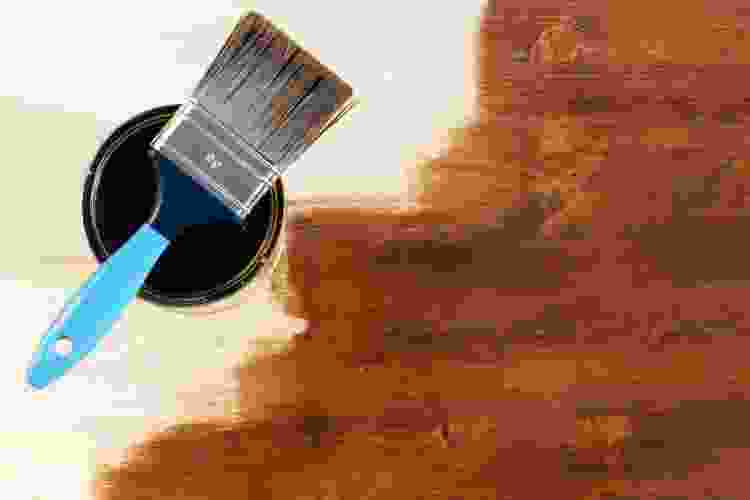
How to Make Golden Brown Paint
Golden brown paint lets you add a natural honey glow to hair and fur textures, landscapes and even skin tones. This shade favors yellow tones, an important aspect when working through how to make brown paint. It’s a simple yet effective formula to learn.
Add Ocher
Ocher is a very specific kind of yellow, close to a gold or straw color. By using ocher as your yellow when determining how to make brown paint for your project, you can start with a gold undertone that you can darken or lighten by using more complex versions of blue and red.
It’s the most direct method for how to make brown paint at the golden end of the spectrum.
Add Orange
If your goal in deciding how to make brown paint is to make a glowing golden brown, mix in some orange and see how it turns up the sunshine in your color. Ocher paint can be helpful here, too. Add a little and watch how it brings nuance to your golden-brown paint.
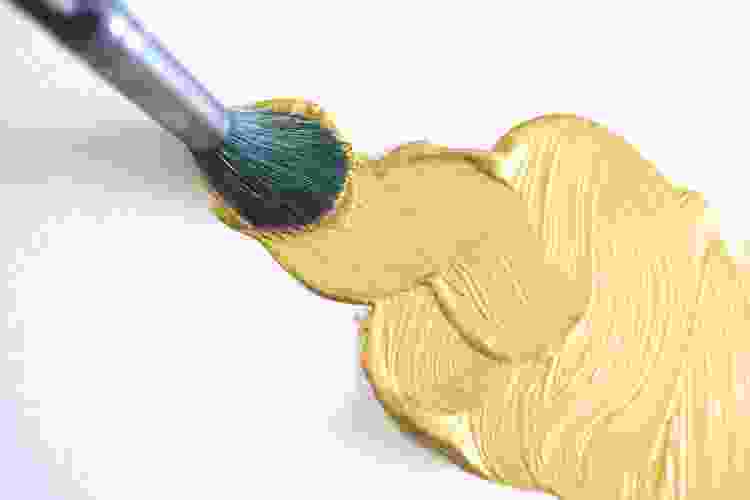
How to Make Reddish Brown Paint
What colors make reddish brown? Reddish-browns like sienna, cinnamon and rust occupy their own space on the brown spectrum. It isn’t difficult to figure out how to make brown paint with a reddish tint.
These shades are easily accomplished with the addition of more red paint. But which shade of red you add will make a big difference in the resulting color.
Add Red
The most straightforward painting technique for how to make brown paint that’s reddish-brown is simply to mix in more of an appropriate red tone. Be sure to use a deep red like crimson or maroon in your basic brown formula to avoid turning your reddish brown into dark red instead.
Tip: If you find that there’s too much red in your brown blend, try adding more yellow and a bit of blue to bring the shade back to the brown spectrum.

How to Make Brown With Oil Paint
Oil Palette Method
When working out how to make brown paint using oils, it’s easiest to begin by mixing your colors on your palette. Small dabs of red, yellow and blue will give you what you need to start blending, an essential method of oil painting for beginners.
- Use a palette knife or paint brush to pull equal amounts of each color to the center of the palette.
- Mix the paint together, spreading it thin as you work to gauge the hue, value and saturation.
- Pull in other colors to lighten or darken your brown, or to give it a more golden, blue, green or reddish tint.
- When you have a color you like, test it on a practice surface such as a piece of paper or cardstock to see how well it achieves your goal. This is a trick for knowing how to make brown paint that leads to unique shades with depth and complexity.
Oil Glazing and Layering Method
You can achieve unlimited shades of brown through glazing by layering paint directly onto your surface in thin coats. Practicing this process for how to make brown paint builds up colors to create a multi-faceted projection of many colors appearing as one, a phenomenon called polychromatism.
- After mixing your colors, thin your paint with solvent and apply it to your project
- Then layer another color on top and another on top of that. Allow the lower layers to show through to create interest and depth.
- Assess the shade you’ve created and adjust the colors to bring in more light or darkness.
- When you’re finished, you’ll have a spectral brown hue created specifically for your piece.
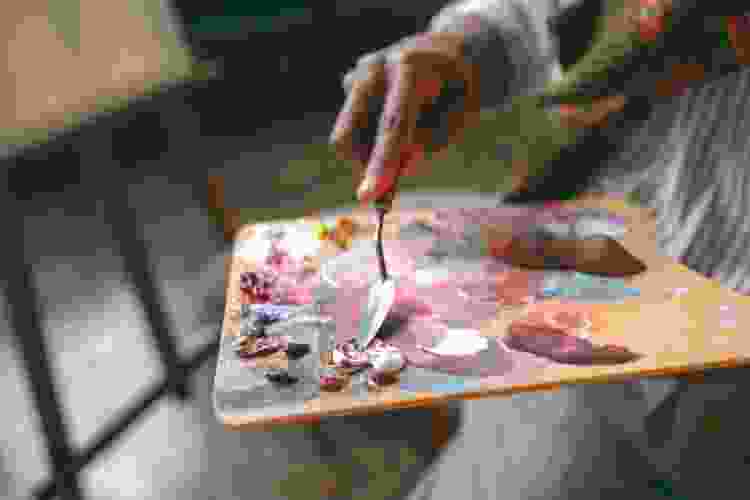
How to Make Brown With Acrylic Paint
Acrylic Palette Method
When figuring out how to make brown paint using acrylic paint, it’s best to begin with dabs of red, blue and yellow on separate areas of your palette.
- Using a palette knife, scrape a bit of each color and press them into a space in the center.
- Push the colors under the blade of the palette knife until they blend into a single shade of brown.
- Then, gauge the color and add more of each to achieve the shade of brown you’re looking for.
Acrylic Glazing and Layering Method
Like oil paints, acrylic paints can be thinned down for glazes that create shades of brown directly on your surface.
This technique for how to make brown paint can be applied to canvas using a glazing medium, which is a special fluid that thins acrylic paint without watering it down. It can also be applied to paper with watered-down acrylics in a form that mimics watercolor paints.
In this method, the thinned-down colors are layered a few thin coats at a time, allowing the colors underneath to show through. The effect is a translucent, multi-hued version that takes methods for how to make brown paint to sophisticated new levels.
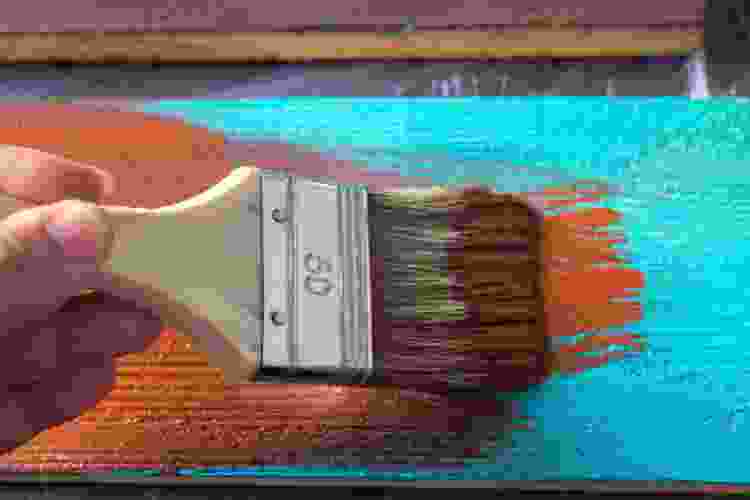
How to Make Brown With Watercolor Paint
Watercolor Palette Method
The same mixing principles apply when discussing how to make brown paint with watercolors. Primary and secondary colors blended on a palette or in a tray will allow you to gauge the hue, value and saturation.
Because watercolor paint is more concentrated before it’s applied to paper, be sure to test your color with washes using various amounts of water on a practice paper to see how it works.
Tip: Try using it in concentrated form, too, to be sure you have the right shade for your painting technique.
Watercolor Wash Method
Similar to glazing, you can apply colors in various watercolor washes directly to your watercolor paper to create shades and tones of brown. This allows for a special technique when experimenting with how to make brown paint: wet-on-wet blending.
By applying colors to wet watercolor paper, you can watch the colors turn into various brown hues, leaving other colors showing through the washes.
This is another form of glazing that works well when building up complex layers for effects that mimic reality, as well as for stylized projects. It’s also an easy way of learning how to make brown paint using colors beyond the primary and secondary sets.
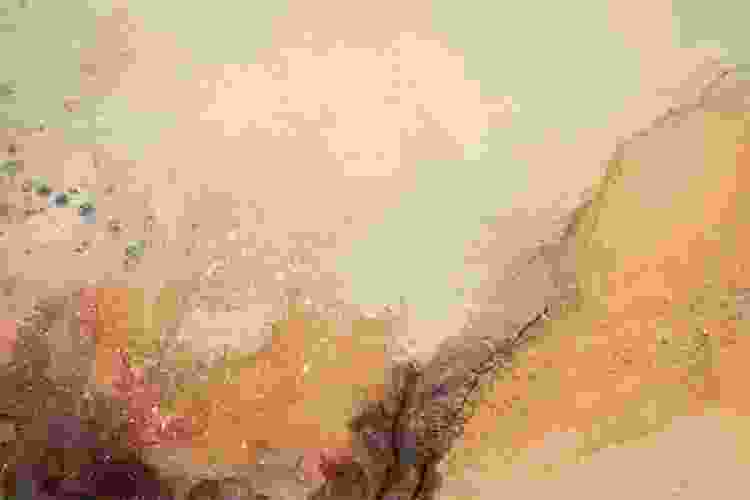
Studies at BMC Public Health demonstrate that participating in the arts for two or more hours per week can improve your mental health. The sense of accomplishment alone is a boost to your self-esteem.
Part of this comes from learning critical concepts for painting, such as color theory and color mixing. By understanding how basic primary colors can be blended into an entire spectrum of browns, the simple task of learning how to make brown paint becomes a pathway to feeling like a successful artist, even as a beginner!
Though there is a variety of pre-mixed brown paint available on craft and art supply stores, knowing how to make brown paint gives you freedom to experiment.
Landscapes, wooded scenes, still life paintings and portraits all require various shades of brown to capture the full array of color in the visual world. Having the secrets of how to make brown paint in your artist’s toolkit lets you create any of these tones, anytime you need them.
For even more creative ideas and inspiration, check out other experiences happening on Classpop!

